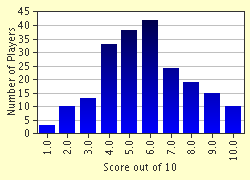Quiz Answer Key and Fun Facts
1. Not much more than a journeyman ball player, he played for parts of seven seasons in the majors mostly with the N.Y. Giants, only hitting .252 with seven HRs over a career total of 289 games. He was one of the very first genuine professional football heroes and is enshrined in the Football Hall of Fame. Even more, he is actually best known for his 1912 performance in another athletic competition altogether. Who was he?
2. Another early professional football player later entered the NFL Hall of Fame primarily for coaching an NFL championship team for two consecutive years in 1948 and 1949. As a baseball player, he broke in with the Cincinnati Reds in 1916, playing 138 games in the outfield and stroking .262 at the plate. He played for seven more seasons before retiring to devote his energies to football coaching. Who was this athlete?
3. In 2005, former Pittsburgh Pirate pitching star, Rick Rhoden, qualified through Q-School to join the Champions Golf tour. A former Yankee pitcher accomplished the same feat in the late 1980s. Although he won 23 games in 1962 and 107 games over his 12 year career, he is best remembered for just one pitch in the 1960 World Series. Who are we talking about?
4. In the mid-1940s, the subject of this question played in a bowl game, then within four years was a baseball star and playing in the World Series. Who was this fine athlete?
5. In the early 1950s, twins from South Amboy, New Jersey would become standout guards for the Seattle University basketball team. Upon graduation, they turned to baseball and were signed by the Pittsburgh Pirates, making their major league debuts in 1953. Unfortunately, neither was a particularly accomplished ball player and they largely filled utility infielder roles for the balance of their careers that were over by the end of the decade. Who were those twins?
6. Who was the first player to have played in both a Super Bowl and a World Series?
7. Who was the first player to pitch in a World Series game for a winning team and play on an NBA Championship team?
8. Who was the first player to be a MVP in the majors and a basketball All-American for two years at Duke University?
9. The first Heisman Trophy winner to play in the Major Leagues was Vic Janowicz. Who was the second?
10. The 1945 Indiana Hoosiers boasted a two tight end offense that struck fear in the Big Ten Conference. One was Pete Pihos who ultimately became a football pro Hall of Famer with the Philadelphia Eagles from 1947 to 1955. The other turned to baseball and in his prime with the Cincinnati Reds during the early to mid-1950s, was a home run hitting machine. Can you name him?
Source: Author
maddogrick16
This quiz was reviewed by FunTrivia editor
Nightmare before going online.
Any errors found in FunTrivia content are routinely corrected through our feedback system.

